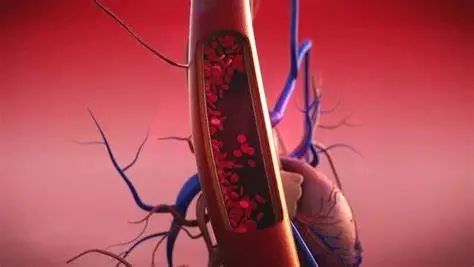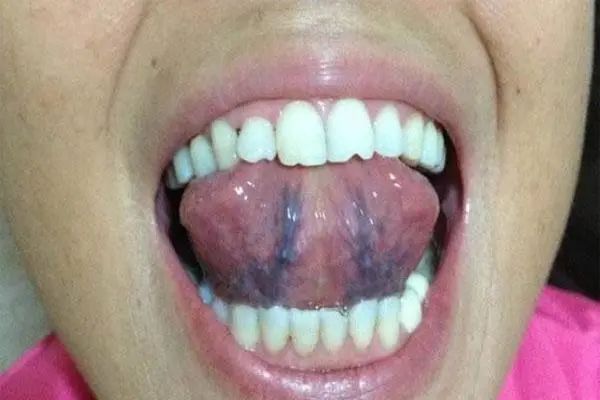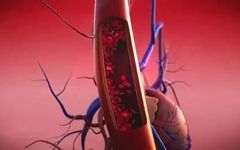Blood stasis is a causative factor in Traditional Chinese Medicine (TCM), resulting from the accumulation of internal and external impurities such as phlegm, dampness, turbid fluids, and uremic toxins entering the bloodstream, leading to the formation of impure blood.

Conditions such as coronary heart disease, tumors, and strokes are all related to blood stasis. The presence of blood stasis in the body is akin to hiding a “time bomb“. Today, we will discuss how to determine if there is blood stasis in your body and how to treat it based on its location.
What happens when there is blood stasis in the body?
Impediment to Blood Circulation: The formation of blood stasis leads to the accumulation of toxins in the body, which, whether stagnated within or outside the vessels, affects the functions of organs such as the heart, liver, and vessels, resulting in conditions like coronary heart disease, strokes, and tumors.
Obstruction of Qi Flow: Qi is the commander of blood, and blood is the mother of Qi. Blood can carry Qi; however, blood stasis causes stagnation in blood flow, which can lead to local or systemic disruptions in blood circulation, resulting in Qi stagnation. This is known as “blood stasis must accompany Qi stagnation“.
Impaired Generation of New Blood: Prolonged blood stasis affects the circulation of Qi and blood, leading to abnormal generation of new blood.
Only by ensuring the normal circulation of blood can we guarantee the functions of the heart, lungs, liver, and spleen, as well as the smooth flow of Qi in the body and the patency of the vessels.
Six Signs to Determine Blood Stasis in the Body
1.
Fever
When there is blood stasis in the body, the obstruction of Qi and blood circulation can manifest as fever. Prolonged low-grade fever indicates Qi and blood stagnation, leading to heat. In the Qing Dynasty, Wang Qingren described a disease caused by blood stasis called “internal heat (also known as lantern disease)”: “The body feels cool, but the heart feels hot, hence the name lantern disease, indicating internal blood stasis. It is considered false heat; the more one supplements, the more stasis occurs; it is considered true fire; the more one cools, the more it congeals. Three or two doses can invigorate blood and reduce heat.”
There is also periodic fever, which may occur in the afternoon or early morning. The causes of this fever, aside from Yin deficiency with heat or damp-heat accumulation, can also be attributed to blood stasis.
2.
Abnormal Sweating

In TCM, blood and sweat share the same source and can influence each other. When there is congestion in a certain area of Qi and blood, symptoms such as sweating may occur. Wang Qingren described in “Medical Corrections”: “Sweating upon waking is called spontaneous sweating; sweating that wakes one up is called night sweats, which depletes the Qi and blood of the person. This is an unchanging conclusion throughout the ages.”
3.
Abdominal Distension
Blood stasis obstructs and hinders Qi flow, leading to Qi stagnation. In the upper jiao, one may experience “chest fullness”; in the middle jiao, one may feel “abdominal fullness, yet the person claims to be full”. This is a description by Zhang Zhongjing, which has been clinically verified. It feels like the abdomen is distended and full, but upon palpation, the abdomen is not enlarged at all. In addition to functional abdominal distension, there can also be solid conditions, such as blood stasis; besides the subjective feeling of fullness, palpable masses may also be found. It is said: “Where there are masses, there must be tangible blood…” This is from Wang Qingren.
4.
Skin Itching
Blood stasis blocks the pathways of blood vessels, especially the fine collaterals, leading to dry skin and skin peeling.

When the local collaterals of the skin are obstructed, various toxins and waste products accumulate, making it difficult to transport nutrients, leading to skin itching. This condition can be effectively treated with blood-invigorating and stasis-resolving herbs.
5.
Numbness and Stagnation
As the saying goes in TCM, “Where there is no flow, there is pain”. This occurs when the righteous Qi is sufficient, and the Qi and blood impact the area of blood stasis, causing pain. When Qi and blood are insufficient, the area of blood stasis may not feel pain; instead, it may feel numb and uncomfortable, indicating insufficient righteous Qi. This is often seen in the elderly.
6.
Insomnia and Vivid Dreams
Insomnia can be caused not only by liver Qi stagnation and blood deficiency but also by blood stasis. The presence of blood stasis in the body leads to poor blood circulation at night, affecting sleep and resulting in insomnia and vivid dreams, making it difficult to sleep soundly.
Self-Assessment of Blood Stasis through Tongue Diagnosis:

1. The sides and tip of the tongue have stasis spots or stasis points;
2. The sublingual veins are dark and thick, spreading outward;
3. The tip of the tongue is deviated to one side;
4. The tongue body is purplish in color.
Five Locations of Blood Stasis
1. Stasis in the Heart is primarily manifested as a thin and knotted pulse, palpitations, stabbing pain, and mental abnormalities, often associated with arrhythmias and coronary heart disease. The main herbs are Su Mu (Sandalwood) and Sheng Shan Zha (Raw Hawthorn).
2. Stasis in the Liver is primarily manifested as hypochondriac pain and masses. The main herbs are Cu Bie Jia (Vinegar Soft-Shelled Turtle Shell) and Chi Shao (Red Peony).
3. Stasis in the Lung is primarily manifested as hypochondriac pain and hemoptysis. The main herbs are Bo He (Peppermint) and Hua Rui Shi (Flower Bud Stone).
4. Stasis in the Abdomen is primarily manifested as masses that resist palpation, amenorrhea, and dysmenorrhea. The main herbs are Ze Lan (Lycopus) and Di Long (Earthworm).
5. Stasis in the Limbs is primarily manifested as swelling, bleeding, and even purplish discoloration. The main herbs are Lu Lu Tong (Sichuan Pepper) and Ji Xue Teng (Sanguisorba).
For treating blood stasis, there is a traditional famous formula in TCM: the formula by the renowned Qing Dynasty physician Wang Qingren – “Xue Fu Zhu Yu Tang” Click to learn more


